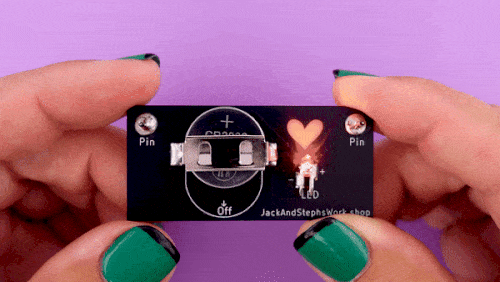
UPDATE:
Coin cell batteries can kill a child if swallowed. It is now mandatory that coin cell batteries be secured behind a secondary layer of protection. This design lacks that protection and it therefore should not be used. See Reese's Law for more information.
The Consumer Product Safety Commission regulation on this topic can be read here. More broadly, almost all simple coin cell holders lack a secondary locking mechanism, so many other products which employ them, even in a standard configuration, are in violation of 16 CFR Part 1263.
I'm leaving the rest of this post up as a notice to anyone who might be searching for similar ideas in the future.
Original Post:
So we make made these fun and simple wearable pins, which we offer offered as soldering kits on our Tindie store. To keep the part count low and the soldering easy, our pins haven't had on/off switches, meaning the power has been controlled by inserting or removing the battery.
Until now.
Our latest pin gains an on/off switch (without adding an extra part) thanks to toggleSlot, a new concept for coin cell holder footprints. By moving the negative pad just a few millimeters up from its usual position under the strap, the battery itself becomes the on/off switch.

How?
Contact with the negative pad is not made until the battery is slid fully into the holder, at which time the circuit is completed. To turn the circuit off, the user simply slides the battery back until contact is lost - removing the battery fully is not required.
Important Note: the negative or "on" pad (labeled N1 in the image above) must have a small amount of solder applied to it for the purpose of raising the surface of the pad high enough to make contact with the underside of the battery.
The footprint is was Creative Commons licensed and available to download from our Github! Sized for a CR2032 battery, it is broadly compatible with 20mm "strap" style holders. The same concept of relocating the negative pad can be applied to any other size holder.
Happy switching!
 Steph
Steph
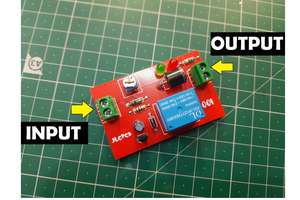
 ElectroBoy
ElectroBoy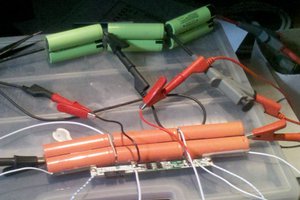
 ClimbinElectronics
ClimbinElectronics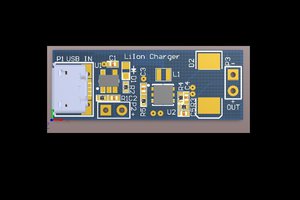
 FrazzledBadger
FrazzledBadger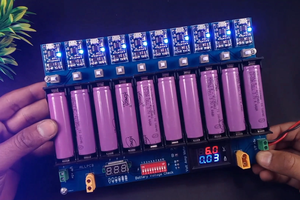
 Electro Dude
Electro Dude
Cool idea. How do you prevent the coin from sliding all the way out and getting separated from the board thus lost?